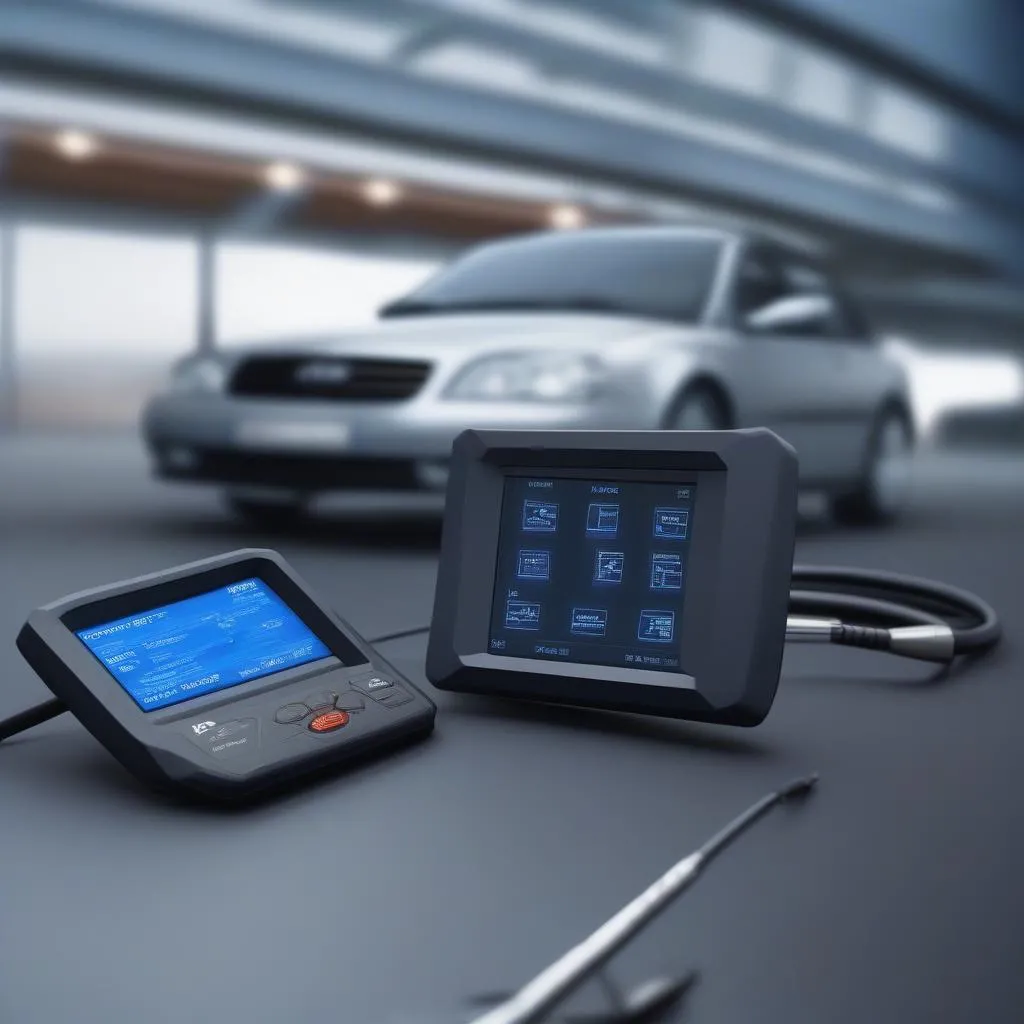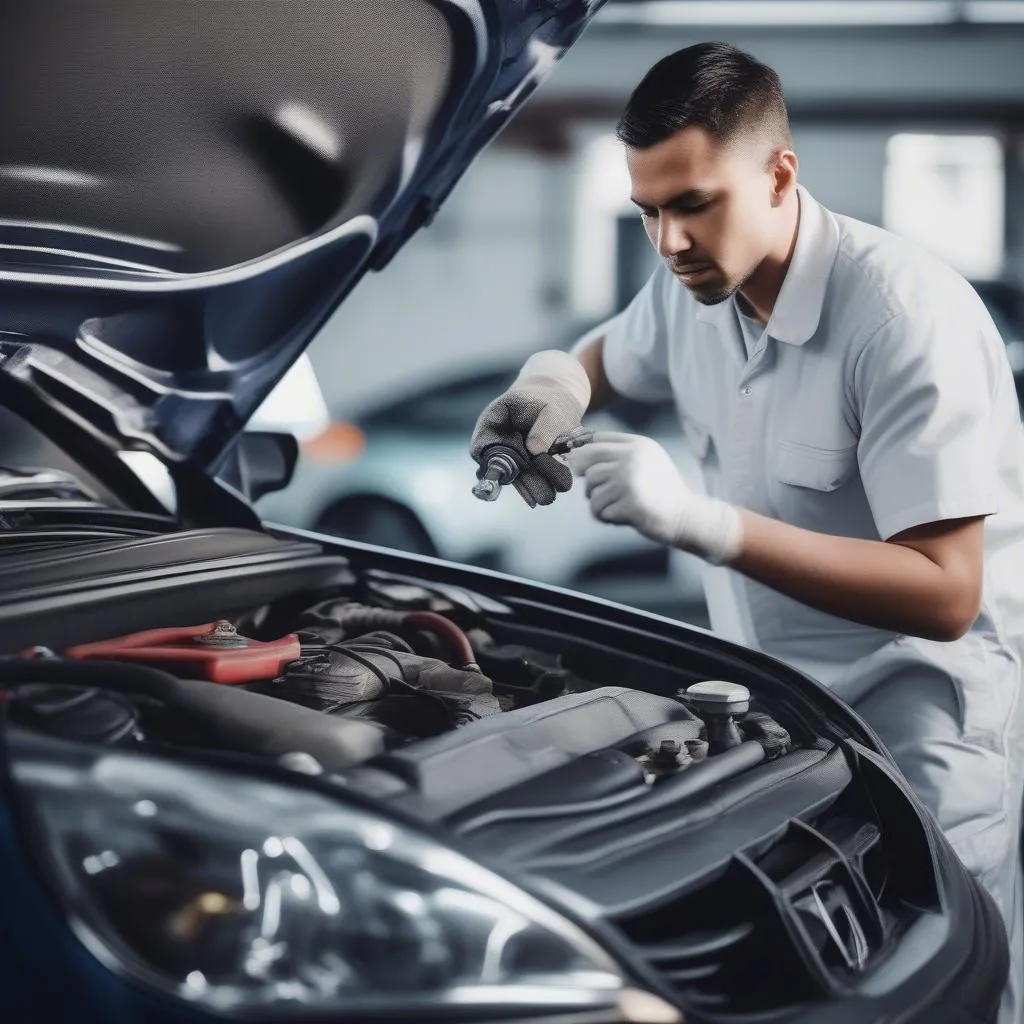Imagine this: you’re driving down the road, enjoying the open highway, when suddenly your car starts making a strange noise. You pull over, check the engine, and find nothing obvious. What do you do?
This is a common scenario that many car owners face. It can be frustrating and confusing, especially if you don’t know much about cars. But don’t worry, you’re not alone!
Understanding Auto Problem Diagnosis: What It Means and Why It Matters
Auto problem diagnosis, simply put, is the process of identifying the root cause of a problem with your car. This can involve a range of factors, from simple issues like a blown fuse to more complex problems like a faulty engine sensor.
Why is auto problem diagnosis important?
- Prevent further damage: Early detection and diagnosis can prevent small problems from escalating into major repairs.
- Save money: By addressing the problem quickly, you can avoid costly repairs later on.
- Ensure safety: Identifying and fixing potential safety hazards can help keep you and your passengers safe on the road.
- Extend car life: Regular maintenance and timely repairs can help extend the life of your vehicle.
How to Approach Auto Problem Diagnosis: A Step-by-Step Guide
1. Observe the Symptoms:
- Pay attention to any strange noises, lights, or smells coming from your car.
- Note any changes in performance, such as reduced fuel efficiency or difficulty starting.
- Keep a record of the symptoms and when they occur.
2. Consult the Owner’s Manual:
- Your car’s owner’s manual is a valuable resource for troubleshooting common problems.
- It may provide information about warning lights, possible causes of issues, and recommended solutions.
3. Check for Simple Solutions:
- Ensure you have enough fluids (oil, coolant, brake fluid, etc.) and that they are not contaminated.
- Check tire pressure and inspect tires for any damage or wear.
- Look for loose connections or damaged wires.
- Inspect belts and hoses for signs of wear or damage.
4. Consider Using a Diagnostic Scanner:
- If the issue seems more complex, a diagnostic scanner can provide valuable information.
- These tools can read codes stored in your car’s computer that indicate potential problems.
- You can purchase a scanner online or at an auto parts store, or take your car to a mechanic for diagnosis.
5. Seek Professional Help:
- If you can’t identify the problem yourself, don’t hesitate to seek help from a qualified mechanic.
- A trained mechanic can diagnose the problem and recommend the best course of action.
Common Auto Problems and Their Diagnosis: A Glimpse into the World of Car Repair
1. Engine Issues:
- Rough idle: This can be caused by a variety of factors, including a dirty air filter, faulty spark plugs, or problems with the fuel injection system.
- Misfire: This is often caused by faulty spark plugs, ignition coils, or fuel injectors.
- Overheating: This can be caused by a lack of coolant, a faulty thermostat, or a problem with the cooling system.
- Loss of power: This can be caused by a number of issues, including a clogged air filter, a faulty fuel pump, or a problem with the engine control module.
2. Transmission Issues:
- Slipping gears: This can be caused by worn-out clutches, low transmission fluid, or a faulty transmission valve body.
- Jerking or shuddering: This can be caused by a number of factors, including worn-out transmission mounts, low transmission fluid, or a faulty transmission solenoid.
- Delayed shifting: This can be caused by low transmission fluid, a faulty transmission valve body, or a problem with the transmission control module.
3. Electrical Issues:
- Dead battery: This can be caused by a number of factors, including a faulty alternator, parasitic drain, or a corroded battery terminal.
- Dim headlights: This can be caused by a faulty alternator, a weak battery, or a problem with the wiring.
- Electrical problems: This can be caused by a variety of factors, including faulty wiring, blown fuses, or problems with the electrical control module.
4. Steering and Suspension Issues:
- Loose steering wheel: This can be caused by worn-out steering components, such as tie rods, ball joints, or steering gear.
- Uneven tire wear: This can be caused by misaligned wheels, worn-out suspension components, or improper tire inflation.
- Vibrations: This can be caused by a number of factors, including worn-out suspension components, unbalanced wheels, or a problem with the tire pressure.
5. Braking Issues:
- Soft brake pedal: This can be caused by low brake fluid, worn-out brake pads or rotors, or a problem with the brake master cylinder.
- Squealing brakes: This is often caused by worn-out brake pads or rotors.
- Pulling to one side: This can be caused by uneven brake pad wear or a problem with the brake caliper.
Diagnostic Tools: Your Allies in the Quest for Auto Problem Diagnosis
1. OBD-II Scanners:
- OBD-II scanners are a must-have for any car owner who wants to understand their vehicle’s health.
- They can read codes stored in your car’s computer, which can help you identify the root cause of a problem.
- You can find a wide range of OBD-II scanners online or at auto parts stores.
2. Digital Multimeters:
- Digital multimeters are essential for diagnosing electrical problems.
- They can measure voltage, current, and resistance, which can help you identify faulty wires, blown fuses, or other electrical problems.
- You can purchase a digital multimeter online or at an electronics store.
3. Automotive Scan Tools:
- Automotive scan tools are more advanced than OBD-II scanners and can provide more in-depth information about your car’s systems.
- They can access a wider range of data, including live data streams and ECU programming.
- These tools are often used by professional mechanics but are also available for purchase by car owners.
4. Dealer Scanners:
- Dealer scanners are specialized tools that are designed to work with specific vehicle brands.
- They can access all of the car’s systems, including the engine, transmission, and electrical systems.
- These tools are often used by dealerships and authorized repair shops.
Frequently Asked Questions: Demystifying Auto Problem Diagnosis
Q: Can I diagnose my car problems myself?
A: While you can certainly try to diagnose some basic problems, it’s often best to seek professional help for more complex issues. A qualified mechanic has the knowledge and tools to diagnose and repair problems efficiently and safely.
Q: How do I know if I need a mechanic?
A: If you’re experiencing problems with your car that you can’t identify or fix yourself, it’s a good idea to consult a mechanic. Here are some signs that you may need professional help:
- Warning lights on the dashboard.
- Strange noises coming from the engine or transmission.
- Loss of power or performance.
- Difficulty starting the car.
- Leaks or drips under the car.
Q: What are the benefits of using a diagnostic scanner?
A: Diagnostic scanners can help you identify the root cause of a problem quickly and efficiently. They can also help you avoid unnecessary repairs.
Q: Can I use a generic OBD-II scanner on any car?
A: Yes, generic OBD-II scanners can be used on most cars manufactured after 1996. However, they may not be able to access all of the car’s systems.
Q: What is the difference between an OBD-II scanner and an automotive scan tool?
A: OBD-II scanners are basic tools that can read codes stored in your car’s computer. Automotive scan tools are more advanced and can provide more in-depth information about your car’s systems.
Q: How can I find a reliable mechanic?
A: Ask for recommendations from friends, family, or neighbors. You can also check online reviews or look for mechanics who are certified by organizations like the National Institute for Automotive Service Excellence (ASE).
Beyond the Basics: Exploring the World of Automotive Diagnostics
1. Advanced Diagnostics Tools:
- The automotive diagnostic landscape is constantly evolving, with new tools and technologies emerging.
- Advanced diagnostic tools, such as those used by dealerships and authorized repair shops, can access even more detailed information about your car’s systems.
- These tools can help diagnose problems that are difficult or impossible to diagnose using traditional methods.
2. The Importance of Data Interpretation:
- Even with the best diagnostic tools, accurate interpretation of data is crucial for effective problem diagnosis.
- Mechanics need to have a strong understanding of how car systems work and how to interpret data from diagnostic tools.
- They also need to be able to apply their knowledge to real-world scenarios and make informed decisions about repairs.
3. The Future of Auto Diagnostics:
- The future of auto diagnostics is likely to be driven by advances in technology, such as artificial intelligence and machine learning.
- These technologies have the potential to revolutionize the way we diagnose and repair cars.
- For example, AI could be used to analyze vast amounts of data from diagnostic tools and identify patterns that could help mechanics diagnose problems more accurately.
Taking Charge of Your Car’s Health: Empowering Yourself with Knowledge
By understanding the basics of auto problem diagnosis and having access to the right tools, you can take charge of your car’s health and avoid costly surprises.
Whether you choose to tackle simple repairs yourself or rely on the expertise of a qualified mechanic, being informed and proactive can help you keep your car running smoothly for years to come.
Don’t hesitate to reach out to DiagXCar for expert support! We offer a comprehensive range of automotive diagnostic tools and services, including:
- Dealer Scanner For European Cars: We can provide access to specialized scanners for a wide range of European car brands, helping you diagnose and repair even the most complex problems.
- Expert Support: Our team of certified mechanics is available 24/7 to answer your questions, provide advice, and assist with troubleshooting.
- Comprehensive Resources: Visit our website to access a wealth of resources, including articles, guides, and videos on various automotive topics, including auto problem diagnosis.
Let’s work together to keep your car running smoothly and safely!
 OBD-II Scanner
OBD-II Scanner
 Experienced mechanic
Experienced mechanic
Want to learn more about specific aspects of auto problem diagnosis?
- Learn about the importance of using an Automotive Scan Tool
- Explore the different types of Auto Diagnostic Equipment
- Discover how to find the right Auto Scan Tool for your needs
Feel free to share your experiences with auto problem diagnosis in the comments below! We welcome your questions, insights, and stories.
Let’s keep the conversation going!